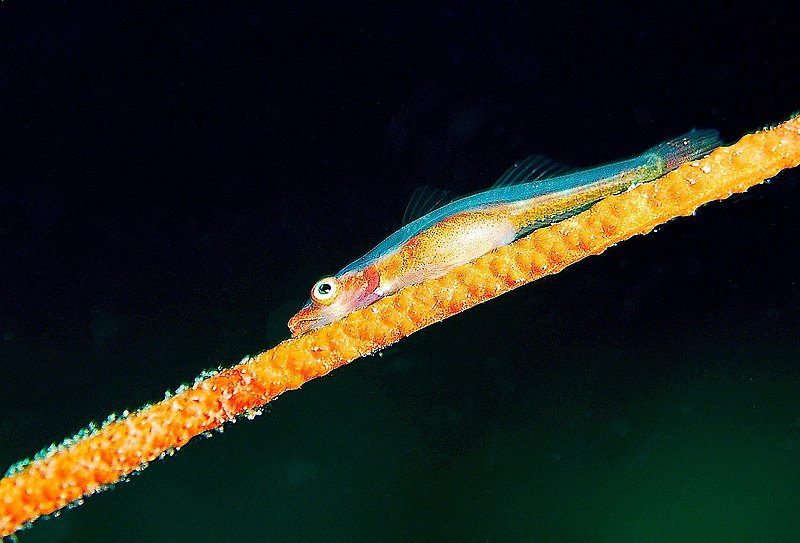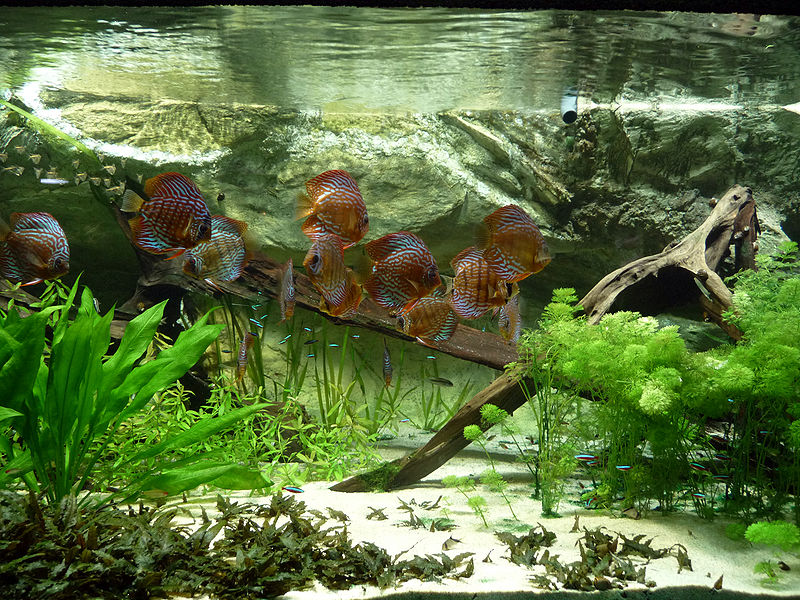 Gorgonians, also known as Sea Fans or Sea Whips, are beautiful and fascinating creatures found throughout the world’s oceans. These creatures are rather iconic, their branched or net-like structures adding a different dimension to a reef, swaying gently with the current. Gorgonians are flexible, stationary cnidarians though they are very similar to soft corals. Individual tiny polyps form colonies in a variety of sizes and shapes. Some are stiff and erect, resembling the veins of a leaf, some resemble ribbons with polyps aligned on the edges, others look like plumes or are branched like trees. There are also single strand colonies and those that encrust on rock in thin sheets. They are often brightly coloured, purple, red, orange or yellow, and polyps may be white, brown, yellow or some other pale shade.
Gorgonians, also known as Sea Fans or Sea Whips, are beautiful and fascinating creatures found throughout the world’s oceans. These creatures are rather iconic, their branched or net-like structures adding a different dimension to a reef, swaying gently with the current. Gorgonians are flexible, stationary cnidarians though they are very similar to soft corals. Individual tiny polyps form colonies in a variety of sizes and shapes. Some are stiff and erect, resembling the veins of a leaf, some resemble ribbons with polyps aligned on the edges, others look like plumes or are branched like trees. There are also single strand colonies and those that encrust on rock in thin sheets. They are often brightly coloured, purple, red, orange or yellow, and polyps may be white, brown, yellow or some other pale shade.
About Gorgonians
More than 500 described species of Gorgonian are found tropical and subtropical oceans around the world. More species are found in the tropical Atlantic that in other regions. They usually grow in shallow waters, though there are some species that grow in depths of more than 1000 ft. Shallow water species tend to be more flexible and broad to withstand currents while deeper water types grow tall, thin, and more rigid. They may grow anchored to solid surfaces like rock or coral, or they may “root” in loose gravel or sediment. Gorgonian colonies are supported by an internal, ridid central skeleton covered with softer tissue that connects each polyp to the next to form the colony. The structure a gorgonian colony creates varies between species from a simple whip-like form to complex net-like fans that can be several feet tall and wide.
Gorgonians provide a secure home to many other maring species including brittle stars, bryozoans and hydrozoans. Pygmy seahorses (Hippocampus bargibanti) cling to several specific species and have adapted to blend perfectly with the colonies with color and texture specic camouflage. You may also find tiny species of crabs, shrimp, gobies, blennies, and other creatures have also adapted to thrive amongst the polyps and branches of Sea Fans.
Choosing a Gorgonian
It’s important to recognize a healthy gorgonian when you’re ready to put one in your tank. Carefully examine your choices, looking for any signs of damage to the skin. Have the person helping you look gently turn each specimen in the water, so you can get a full look, and take notice of any damage, missing tissue, or flaking or peeling of tissue when the specimen is moving. Smell the water in the holding tank. If there is a noticeable odor, avoid the tank, as it may be sign that one or more of the gorgonians is rotting. Look for one with a thick, sturdy, uncut stem or base, and at least a few extended polyps.
Gorgonian Care
Care of gorgonians will vary greatly according to the species you acquire, and you should take care to research the variety before purchase to ensure that you can provide what it needs to thrive. That being said, most of the common species available in the trade have relatively simple needs.

When you place your new gorgonian in the tank, give it plenty of space where it can sway with the current, completely submerged and without touching other corals or surfaces. Be sure to orient your Sea Fan in good, strong, direct current to ensure they are exposed to plenty of food when it is added to the tank. The water flow will also provide the tissue with plenty of oxygen and keep the surface free of waste and debris. The specimen should be mounted upright and with plenty of light exposure.
Gorgonians are filter feeders. Each tiny polyp has eight tentacles used to catch phytoplankton and other tiny particles carried to them in the current. Many prefer to feed at night, so generally this is when you’ll see the polyps emerge. There are many commercial invertebrate food options available to offer gorgonians. You may also offer them tiny frozen foods like rotifers, cyclopeeze and baby brine shrimp. Administer a small amount of food to entice the polyps to open, then follow a short while later with a larger dose when the most of the polyps are extended.
Many Gorgonians are also photosynthetic, containing symbiotic algae in their polyps that provide a secondary energy source for the colony. Fro these species it is vital that strong light is provided. Photosynthetis species typically have brown or green polyps as opposed to those lacking pigmentation. These species may grow rapidly when kept in ideal conditions, and periodic pruning may be required. See this article for detailed info on pruning and propogation.
Be aware before you purchase a gorgonian that many fish and inverts may see them as a new meal. Keep a watchful eye for crabs, snails, slugs and other predators that can quickly damage your fan. Gorgonians also play host to lots of other organisms, so don’t panic right away if you find tiny serpent stars, anemones or other creatures from your tank amongst the branches.
Gorgonian image referenced from wikipedia and originally posted by Nobgood
goby on Gorgonian image referenced from wikipedia and originally posted by Jenny (jennyhuang) from taipei
 That Fish Blog – Aquarium Advice and Information
That Fish Blog – Aquarium Advice and Information





